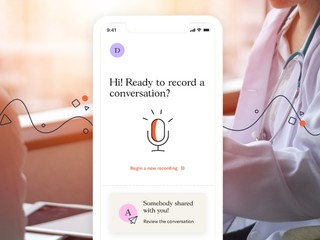 Even before COVID, physicians were already feeling burned out; in January 2019, the Harvard School of Public Health and other institutions deemed physician burnout a “public health crisis.” Now the problem is even worse: a Medscape survey from September found that 64% of US physicians said that burnout had intensified during the crisis. As a result, 25% also said they were considering retiring earlier than previously planned,” while 12% said they were planning a career change away from medicine.
Even before COVID, physicians were already feeling burned out; in January 2019, the Harvard School of Public Health and other institutions deemed physician burnout a “public health crisis.” Now the problem is even worse: a Medscape survey from September found that 64% of US physicians said that burnout had intensified during the crisis. As a result, 25% also said they were considering retiring earlier than previously planned,” while 12% said they were planning a career change away from medicine.
This burnout has affected the patient-doctor relationship, said Matthew Ko, co-founder of DeepScribe, an AI-powered medical transcription startup that announced a $5.2M seed round on Thursday. The company is specifically looking to alleviate physician burnout by reducing time spent on paperwork.
“Doctors routinely cite paperwork as one of their largest problems. They spend over a third of their time on documentation, resulting in rushed appointments, burnt out doctors and, at worst, errors and omissions. Patients, who see a distracted doctor glued to his or her computer, feel unheard and uninformed,” he told me.
There are generally two ways for doctors to solve this problem: medical human scribes or dictation apps. While the apps are cheap, they’re also inaccurate and awkward to use. Human scribes offer a better quality outcome, but they’re expensive and need hiring and training. DeepScribe’s solution is to provide what it calls “the world’s first ambient AI medical scribe,” taking the burden off the doctor by automatically transcribing appointments and uploading them to electronic health records (EHRs).
Launched in 2019, DeepScribe provides physicians with an iPhone and iPad app that listens in the background, takes notes and automatically summarizes the entire patient conversation into a compliant note in the doctor’s EHR system. It also allows doctors to create precisely tailored notes, letting them choose between long sentences or short, conversational or official, a summary of everything discussed or just what’s medically relevant.
There are a number of other startups also providing medical transcription services, including Abridge and Medcorder; Amazon even launched its own service in 2019. DeepScribe stands out in a crowded space by being “the first AI solution to deliver both the affordability and convenience of an automated scribe with out-of-the box accuracy comparable to that of human assistants,” Ko said.
The company uses an AI model that was developed at UC Berkeley’s AI Research Lab, combining classical rule-based natural language processing (NLP) with modern deep learning techniques. It combines the output of three different speech recognition engines: its own, which identifies physician/patient-specific lingo; IBM’s, which is good at recognizing medications and conditions; and Google’s, for conversational speech.
“My co-founder Akilesh Bapu and I used an approach for DeepScribe similar to the ingenious ‘centaur’ AI that recently won the American Crossword Puzzle tournament. This approach bounds the problem space and makes the deep learning algorithms both more effective and more predictable,” said Ko.
“The resulting output is sufficiently meritorious to make DeepScribe the only AI widely accepted by medical professionals that can draft patient notes from the natural conversation.”
DeepScribe is able to provide 16% higher accuracy, while also saving physicians three hours a day, reducing time spent per appointment by 80% and eliminating after-hours work. Users also spend twice the amount of time in each appointment talking with their patient instead of using the computer.
DeepScribe is growing quickly, especially over the last year, with 66% new user acquisition a month. In that time, 400 providers have adopted DeepScribe’s technology, generating around 500,000 notes. The company documents appointments with 10,000 patients a week, and supports 18 different specialties and 40 states, 99% of whom adopted DeepScribe in the last 12 months alone. Much of that growth due in increased demand thanks to COVID.
“When the pandemic made front-line providers’ jobs harder and it became unsanitary and a friction point to have in-person scribes given the spread of COVID, we saw increased demand. 99% of our current users adopted DeepScribe in the last 12 months alone,” Ko told me.
At the onset of the pandemic, DeepScribe built a telemedicine platform from the ground up so that doctors could have transcribing built in, and distributed this tool for free to over 300 doctors.
The new funding round was led by Bee Partners with participation from Industry Ventures and Stage 2 Capital along with existing investors Tsingyuan Ventures, 1984 Ventures, Wavemaker 360, Supernode Ventures, Skydeck, Plug and Play and Sequoia Scout Fund.
The company plans to expand its team, growing the number of ML and product engineers, as well as its sales and implementation teams, in order to catch up with product demand. It will also be expanding its EHR integrations offerings, while also expanding its product offerings and functionality to cater to every type of physician or specialty.
What DeepScribe is really addressing is a growing divide in patient care quality, between those doctors that could afford a human scribe, and could therefore spend more time and attention on their patients, and those who couldn’t, making them less able to focus on their patients. DeepScribe’s goal is to make accurate medical scribes accessible to all doctors, from the high-paid specialist in a city hospital system to the rural community clinic.
That is why DeepScribe envisions creating a “Jarvis” for physicians, creating more efficient patient visits and more informed patients, as doctors and AI work together in harmony.
For example, before the doctor sees the patient, the company will give them a summary of the patient’s medical history and reason for visiting, in a format that is optimized for the doctor to efficiently glean information. The physician will be served data from patients with similar complaints and treatment patterns. In addition, the physician will be able to compare the efficacy of their diagnoses with other patients with similar complaints, and simulate the possible outcome of treatments.
“We won’t stop until every physician has a sustainable, affordable and accurate solution to the hours of paperwork they have to do right now, truly bringing the joy of care back to medicine,” said Ko.

















